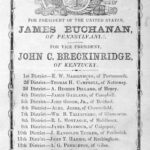Robert Bly’s “Iron John: A Book About Men,” stands as a cornerstone text within the mythopoetic men’s movement, sparking both fervent admiration and critical debate. This article delves into Bly’s theories, particularly as they are situated within broader discussions of masculinity, feminism, and the evolving roles of men in contemporary society. We will explore the core tenets of Bly’s work, examining its appeal and the significant critiques it has faced, especially regarding gender dynamics and societal structures.
The Controversy of Men’s Groups and Male Identity
The concept of men-only gatherings, a practice often associated with the men’s movement and sometimes implicitly endorsed by Bly’s work, has drawn considerable scrutiny. Scholar Robert Brannon, a keen observer of the men’s movement since its inception, raised important ethical questions about exclusion. Brannon argues against gender-exclusive groups, drawing a parallel to discriminatory practices based on race or religion. He questions the fairness of excluding women from men’s events simply because of their gender, highlighting the potential for such segregation to mirror historical injustices.
However, proponents of men’s groups often argue from a perspective of perceived victimhood. Some men express feeling shamed or marginalized, particularly in discussions around gender and societal expectations. This sense of being an “oppressed class” fuels the desire for separate spaces where men can explore their identities, redefine their roles, and find solidarity without the perceived judgment of women. Ritualistic practices like drumming and chanting, common in some men’s gatherings, are seen as tools to reclaim a sense of lost power and foster male bonding. Critics, however, caution against equating the experiences of men, especially white men, with those of genuinely oppressed groups, pointing out the inherent power dynamics within society.
Bly’s Evolving Views on Masculinity: From Matriarchy to the “Male Mother”
Robert Bly’s thinking on masculinity has undergone a notable evolution. Initially, he expressed a romanticized view of matriarchal societies, even leading seminars focused on the “Great Mother” archetype. This phase suggested a belief that reverting to supposedly feminine values of the past could offer societal improvement. Later, Bly shifted towards a different romantic ideal: a reclamation of traditional masculinity, characterized by strong father-son bonds forged in shared, male-dominated workspaces.
To bridge these seemingly disparate ideals, Bly introduced the concept of the “male mother.” Drawing influence from figures like Joseph Campbell and Carl Jung, central figures in the mythopoetic movement, Bly sought to integrate feminine principles within a patriarchal framework. The “Wild Man” archetype, central to “Iron John,” embodies this synthesis. The Wild Man, in Bly’s view, is deeply connected to the “mother” archetype yet has successfully navigated the patriarchal world to inherit the “father’s mantle.” This figure is then positioned as a guide, capable of ushering men into the world after their initial nurturing by the mother figure – a “male mother” in essence.
Critiques of Archetypes and Essentialist Gender Views
A significant critique of Bly’s work, and the broader mythopoetic men’s movement, centers on its reliance on Jungian archetypes. Critics argue that Bly, like Jung, operates within a framework of fixed and opposing masculine and feminine natures. This perspective defines men and women by inherent, unchangeable traits (masculine Logos, feminine Eros), effectively mirroring and reinforcing existing societal power structures under the guise of apolitical, archetypal truths.
Feminist thought, in particular, challenges this essentialist view. Feminism posits that masculinity and femininity are not inherent biological givens but rather cultural constructs. These constructs are rooted in historical and societal systems, often serving to maintain a patriarchal order where one sex is subordinate to the other. The critique suggests that Bly fundamentally misunderstands this core feminist concept. Instead of recognizing gender roles as socially constructed, Bly appears to interpret feminism as an idealization of the “feminine” and a longing for a return to the “Great Mother,” missing the point about the systemic nature of gender inequality.
In conclusion, while Robert Bly’s “Iron John” has undeniably contributed to discussions about masculinity and men’s inner lives, it is crucial to engage with the critical perspectives surrounding his work. These critiques highlight the potential pitfalls of essentialist gender views and the importance of understanding masculinity within the complex frameworks of social and political power dynamics. A nuanced understanding of “Iron John” requires acknowledging both its cultural impact and the valid concerns raised about its underlying assumptions regarding gender and society.

